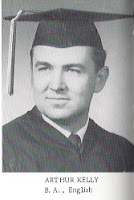There are many events, persons, and places in my life that fit in a category named “sacred.” The word has many different meanings but key associations for me are words like holy (adjective—set aside); liminal (adjective—an opening, doorway, in between); pilgrim (both verb and adjective—a person on life journey); journey (both noun and verb—the way on which one pilgrims); and godly (adjective and adverb—of God, i.e., holy). In a sense, every entry in this ongoing blog reflection on my life is a reflection on sacredness. Sacramentalism is essentially a perspective that says that all of life is created—everything and everyone in life is created. And connected. By virtue of this understanding, all of life reflect its Creator. To live life sacramentally is to see all things and all persons as holy and connected—reflections of the One who created it all: trees, seas, whales, persons, ants, flowers, indeed, all.
sacred space—tangible or otherwise—a space/location/place that makes it more possible for those who acknowledge and accept it to feel reverence and connection with the spiritual
Some persons and places take on an even greater sense—an aura—because of the intentionality involved and the personal connection.
The persons I’ve written about (and those about whom I will write) in this on going reflection are persons who do not take their own godly worth for granted and seek in all they do and think—in all of their relationships—to live a holy life. This holiness is defined in various way, but at the heart of the definitions are some key biblical teachings: the mind of Christ and love God and love others. You see, there is a “set aside ness” (holy) that is characteristic of a sacramental perspective—set aside for a purpose (a purpose defined by these understandings).
For me, Warner Pacific College has been/still is such a holy place.
Set aside for a purpose—from its beginnings, designed for the wholeness of humans. Designed for intentional learning that recognizes no off bounds: faith, life, and learning. Not as separate, distinct silos—but as related, connected parts of integrated, mutual, interdisciplinary, relational, paradoxical conversation about what matters most: How then do I live?
Just as persons are holy, I believe that places can also be holy, that is, also set-aside for such purposes. Nearly anyone who has walked into one of the ancient cathedrals of Europe senses this sacred geography, sacred architecture; set aside to serve the purposes of God. A walk in a church cemetery. The Grotto in Portland. A labyrinth at St. Luke’s. For a while, the grounds of the Franciscan Renewal Center, Portland. The ruins at Cluny, France. The Pacific Ocean—the “end of the world” at Depoe Bay, Oregon. The choir at Mt. Angel Abbey. Around dinner tables with good friends around the world. The chapter house at Wells, England. The tomb of the Venerable Bede at Durham, England. Baalbek in Lebanon. Wittenberg in Germany. And, yes, Warner Pacific College, “nestled on Mt. Tabor’s bosom / Glorious Hood in view.”
As a student, I attended WPC from 1962–1965. I returned to join the faculty in 1972 and stayed until 1995. I returned after 15 years and now hang out in classrooms—always sacred spaces for me. This is a holy place and on these sacred grounds,
• I lost and then found Jesus all over again for the first time (with apologies to Marcus Borg’s one-of-the-best-book-titles of all time).
• I was called beyond myself to discover my self. Broken. Then started on a journey
to healing and wholeness.
• I discovered the joy and joys of learning and the life-changing powers of friendship.
• I discovered my gifts and my gifts were used and honored.
• I found the freedom of aligning my self with a person/idea/vision greater than my own needs or wants or dreams or self.
• I found my wants refined, my needs fulfilled, and my dreams enlarged.
• I found the love of a lifetime who shattered in all the best ways the sorry ego of my life.
On those grounds. Walking between those buildings, sitting in those classrooms, coffee here and there, classrooms, those faculty offices, even the meetings, hallways, gardens, with my teachers, my peers, my students (all of whom carry these roles interchangeably and mutually)—I found a faith that lives and grows and changes, is challenged, questioned, and mangled, is hopeful and fearful and stretching. I began a journey that I’d been on all my life without knowing and a journey I’m still walking—I hope, now, with greater intention.
I am grateful for this space—this holy space made sacred by the prayers and thoughts and conversations and ideas and lives of holy people—teachers, administrators, presidents and deans, and students—the latter most likely the most influential through their own struggles, demands, fears, and friendships. And their willingness to invite me into their lives at significant times as if I had something to offer and, together, we learned so much. So many former students—now friends. This place and these people, God and me—we made a life I might not even dream of possible….
Thanks be to God!




No comments:
Post a Comment